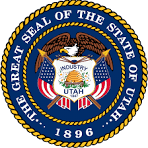It is 2021 and it is Time for Pennsylvania to Let Nurses Work

Lessons Learned from COVID-19 and Temporary Regulation Rollbacks
February 19, 2021
Minnesota State Government Finance and Policy and Elections Committee – 3/2/21
March 3, 2021It is 2021 and it is Time for Pennsylvania to Let Nurses Work
 Randee McGee
Randee McGee Alexis Schumacher, MHMR
Alexis Schumacher, MHMR
Published 2/22/21
For individuals like us who live in Pennsylvania, it can sometimes be hard to find a family doctor. This problem has only gotten worse as a result of serious strain placed on the health care system from COVID-19. Earlier this month, Massachusetts joined other New England states by taking a step to address the discerned issue. Governor Baker joined 22 other states in granting full practice authority to nurse practitioners. California also provided a pathway for nurse practitioners to work to the full extent of their training last year. PA, on the other hand, continues to lag behind.
In 2015, PA’s inadequate physician count was identified in a Joint State Government Commission report; estimating the need of an additional 1,039 physicians to maintain the current state of affairs due to our aging population. Although 22% of PA patients reported receiving care from nurse practitioners in 2015, it is worth pondering if the potential of nurses is fully recognized. Here in PA, nurse practitioners are limited in their ability to help fill in this gap. PA law requires nurse practitioners to pay a physician to enter into a written collaborative agreement—effectively tying them to physicians and preventing their mobility to areas of need.
The current restrictive nursing law is an example of the burdensome medical licensing laws that occur across the United States. Similar state regulations are usually put in place under the guise of ensuring quality of care, even though there is no evidence of the direct correlation. In fact, the laws are contradictory working, hurting states that are trying to reach the goal of providing higher quality care. There is evidence that NPs are more likely to leave restricted scope-of-practice states and move to a state with full authority.
The problem of finding a primary care provider is even harder for rural residents of the Keystone State. Here in Cambria County, both the Ebensburg and Hastings areas are federally designated health provider shortage regions (HPSA) for primary care physicians. A federally designated HPSA is defined as a, “service area that demonstrates a critical shortage of primary care physicians, dentists or mental health providers.” The Cambria service area is also defined as a medically underserved area (MUA). A MUA identifies, “areas or populations with a shortage of healthcare services.” Nurse practitioners could help to fill in this gap, but the current regulatory environment blocks their ability to do so.
Recognizing the significant challenges COVID-19 has posed and the struggles that will remain after the virus is defeated, Massachusetts and California have modified their nurse practitioner regulations permanently. Pennsylvania should look to its New England neighbors for guidance as it reconsiders the costs and benefits of letting nurse practitioners do their job. Lifting these outdated and burdensome licensing restrictions will grant NPs the ability to open their own practice and provide high-quality medical treatment across the Commonwealth. This common-sense reform could help alleviate the shortage of primary care and present better health outcomes for the state’s population. Pennsylvania would not be going out on a limb by implementing these modifications– it would just be catching up to other states.
Randee McGee is a senior at Saint Francis University and a research fellow for the Knee Center for the Study of Occupational Regulation. Alexis Schumacher is the Outreach and Public Relations Coordinator for the Knee Center for the Study of Occupational Regulation.


